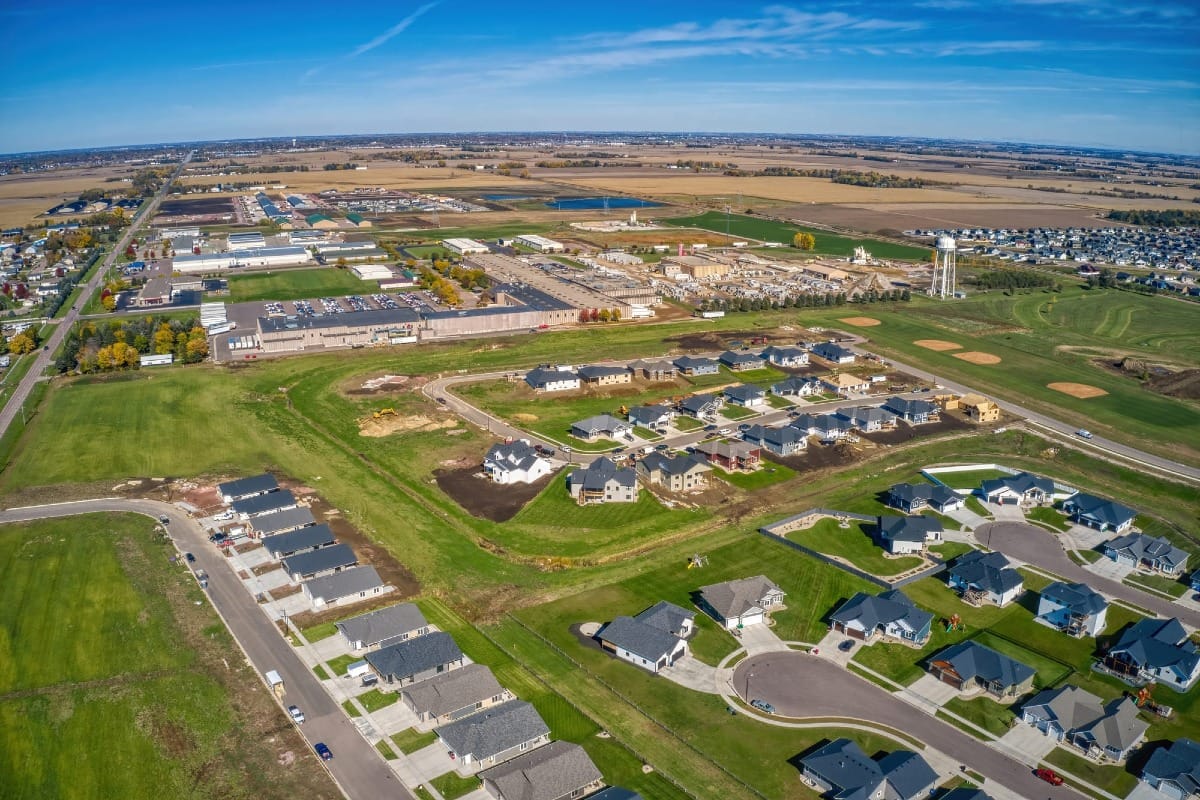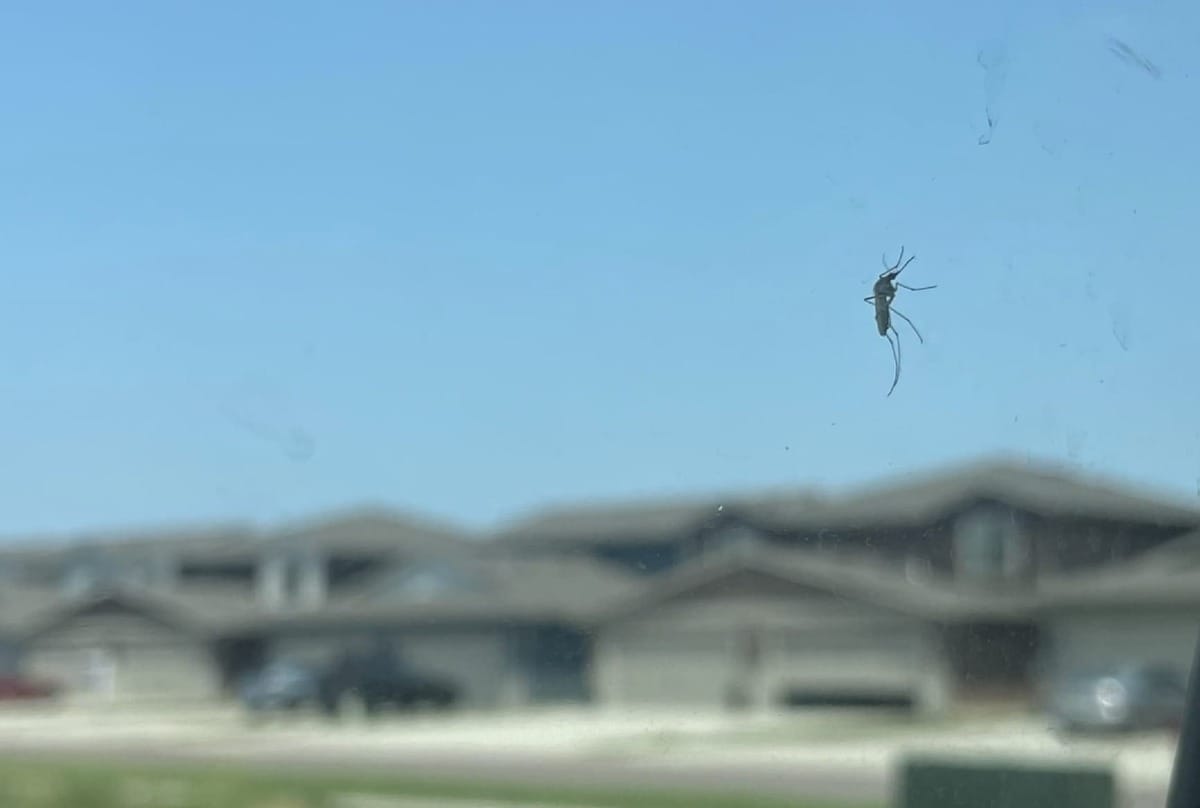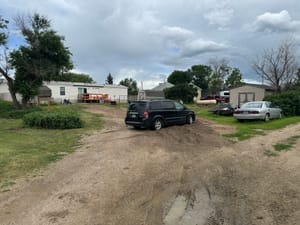A South Dakota county with the second-highest national rate of lethal West Nile virus in humans shares a border with a county that has never reported a single case.
Between 1999 and 2023, Dewey County recorded 13.74 neuroinvasive cases per 100,000 people, just behind King County in Texas, according to the U.S. Centers for Disease Control and Prevention. Neuroinvasive refers to those more serious cases that can affect the brain and can be deadly.
Ziebach County, which borders the western boundary of Dewey County in north-central South Dakota, shows zero neuroinvasive West Nile virus cases, according to the CDC. The Cheyenne River Indian Reservation covers most of both counties.
"That's wild," Randolph Runs After, environmental health specialist at Cheyenne River Sioux Tribe, said after learning about the Dewey County ranking. "We actually haven't had that many cases in the last few years."
The data aren't wrong but need explaining.
"The medical facility for both counties is in Eagle Butte, Dewey County, and they are the ones who report to the health department," said Michael Claymore, director of the Cheyenne River Sioux Tribe Prairie Management Program.
Population numbers also impact incidence rates, Tia Kafka, marketing and outreach director at the South Dakota Department of Health, said in an email. The fewer residents live in a county, the more impact a single West Nile virus case will have, she said.
"Historically, Brown County has been the hotspot for West Nile virus activity in South Dakota, with the most cumulative West Nile virus cases reported," Kafka said.
Brown County, whose county seat is Aberdeen, recorded more than 340 West Nile virus cases between 1999 and 2023, which ranks it 24th among other counties in the United States, the CDC said. Within South Dakota, Brown County is followed by Pennington County, with more than 220 West Nile virus cases during that time, and Minnehaha County, with almost 200 incidents.
The U.S. Department of Health and Human Services defines a high incidence rate as one that is greater than 1.1 per 100,000 people. Analysis of the CDC's historic data within this framework showed that 61 out of 66 South Dakota counties – which amounts to 92% – have a high incidence of West Nile virus cases in humans.
When bitten by a West Nile virus-carrying mosquito, most people will not show any symptoms, said Erin Staples, M.D., medical epidemiologist with CDC’s Division of Vector-Borne Diseases. Some will develop West Nile fever, but even fewer will get a neuroinvasive West Nile virus disease, which affects the brain or the space around it. Non-neuroinvasive cases are generally less serious.
Virus reached SD in 2002, has been declining
Runs After remembers the first years of West Nile virus in South Dakota when "you could find dead birds here and there."
The first reported case was in 2002 in a crow in Aberdeen, according to a Rapid City Journal story from July 2002.
West Nile virus first appeared in the United States in New York City in 1999 and reached the West Coast by 2004, Staples said. She added that a lot of people got infected at the time because "there was no immunity in anybody."
Since 2002, the South Dakota Department of Health has recorded more than 2,800 human cases, 53 of which were fatal.
In 2003, Virgil Christensen, an 89-year-old man from Wakonda in Clay County, became the first South Dakotan to die from West Nile, according to the Vermillion Plain Talk.
The United States and South Dakota reported a peak number of West Nile cases that year, with 1,039 occurrences in the state alone.
After heavy rains across much of the state this spring and summer, the South Dakota Department of Health has recorded the first West Nile virus case of 2024.
The department's West Nile Virus Surveillance tool shows that this non-neuroinvasive case of West Nile virus disease was found in a resident of Beadle County who is at least 64 years old.
The CDC's surveillance tool shows that neighboring North Dakota and Nebraska have already recorded one and four cases, respectively.
Weather and human activity increase mosquito numbers
As of July 17, The South Dakota Department of Health predicted 48 West Nile virus cases for 2024 in the state.
Kafka said the state health department uses a model, updated weekly, that considers factors like historical human West Nile virus case data, environmental data, and current year mosquito pool testing data.
Historically, late July and August tend to accumulate the highest number of West Nile virus cases across the United States.

South Dakota experiences the same trend because of "several interrelated factors," Kafka said.
Mosquitoes that can transmit West Nile virus reach their highest population numbers during the warm summer. In addition, heavy rains create puddles and stagnant bodies of water, which are favorable conditions for mosquitoes.
"Warmer temperatures not only support mosquito breeding but also accelerate the development of the virus within mosquitoes, enhancing the risk of transmission to humans," Kafka said.
People also like to spend more time outdoors during the summer, camping, hiking, and participating in evening gatherings, which increases their chances of encounters with mosquitoes, she said.
Mosquitoes are 'the main culprit'
Staples, of the CDC, said West Nile virus is usually transmitted through a mosquito bite.

"Mosquitoes are often referred to as the deadliest animal in the world, as they cause more death and disease than any other animal on the planet," Staples said.
Birds also contribute to the spread of West Nile virus. Once infected, they can develop enough virus to pass it on to a non-infected mosquito, which is why they are sometimes called "amplifying hosts," she said.
Humans do not have the same capabilities, although they can spread the virus to one another through blood transfusion, Staples said.
Several vaccines have gone through the early stages of clinical development but are currently stuck at the part called efficacy trial, she said.
"You need to be able to say, 'Where is there West Nile? I'm gonna start vaccinating people and look to make sure that the vaccine is very effective and can prevent infection,’ Staples said. "Unfortunately, we haven't been able to necessarily predict where West Nile is going to occur. That's really the sporadic and unpredictable nature of West Nile virus."
CDC and state fund mosquito control
The South Dakota Department of Health received almost $1.5 million in 2023 for the department's West Nile virus media campaign and laboratory testing of mosquito pools through the CDC's Epidemiology and Laboratory Capacity Program.
This year, the state Department of Health allocated $500,000 in grant funds to distribute among cities, counties and tribes for mosquito control in amounts ranging from $500 to $20,000. Kafka said that 166 applicants received money based on the population and history of human cases.

The Cheyenne River Sioux Tribe Prairie Management Program received $9,325 as part of the grant.
Claymore said the Prairie Management Program tries to eradicate mosquitoes in several different ways. He said the team monitors traps and tests captured mosquitoes to see if any of them carry viruses.
The program also conducts larva sightings, which involve putting chemicals in standing water to kill mosquitoes before they get a chance to develop into adults.

Workers also spray the ground, fog the trees and disperse microscopic droplets of a chemical compound mixed with oil through aerial fogging.
Claymore said the program uses all of the Department of Health grant money to buy just enough chemicals to last a season.
"I tell people to just watch the news and see where the mosquitoes are at, and they are moving towards us," Claymore said. "Now it’s really important to be more vigilant with your personal protection."
Mosquitoes in Sioux Falls 'as bad as ever'
The city of Sioux Falls, Aberdeen and Pennington County, received $20,000 each from the Department of Health grant program.
Dominic Miller, environmental health manager for the Sioux Falls Department of Health, said in an email that the city's mosquito control program was created the same year the city recorded its first West Nile virus case in 2003. More than 20 years later, the number of mosquitoes in 2024 is "as bad as (the city has) ever seen it," he said.

The city of Sioux Falls is divided into 18 spraying zones, and each zone has at least one mosquito trap. Every morning during weekdays, the mosquito control team checks all traps to count and test captured mosquitoes.
This summer, one of the traps collected 6,300 mosquitoes overnight, Miller said.
The mosquito control team uses the number of trapped mosquitoes to determine what zones to spray and aims to eradicate all kinds of mosquitoes, not just those that may carry West Nile virus, he said.

How to prevent West Nile infection
Kafka said homeowners can minimize the risk of being bitten by installing or repairing window and door screens to keep mosquitoes outside of homes.
The state Department of Health also encourages people to reduce the risk of being bitten by mosquitoes and contracting West Nile virus by joining "the S.W.A.T. team:"
- Spray: When outdoors, apply mosquito repellents that contain compounds like DEET, picaridin, 2-undecanone, param-menthane-diol, IR3535 or oil of lemon eucalyptus.
- Water: Remove standing water from old tires, buckets and other containers that can give mosquitoes a place to breed; regularly change the water in bird baths and pet dishes, and stay away from areas near standing water.
- Arms: Wear pants and long-sleeved shirts to cover exposed skin.
- Time: Limit time outdoors at dawn and from dusk until midnight when mosquitoes are most active.
Susan Hoover, M.D., an infectious disease physician at Sanford Health, said that since there is no treatment for West Nile virus, it's paramount to take those precautions.
If a person is bitten and exhibits such symptoms as fever, vomiting, diarrhea, headache or body aches and suspects they may have West Nile virus infection, they should contact their health care provider, she said.

This story was produced by South Dakota News Watch, an independent, nonprofit news organization. Read more in-depth stories at sdnewswatch.org and sign up for an email every few days to get stories as soon as they're published. Contact us at info@sdnewswatch.org.








